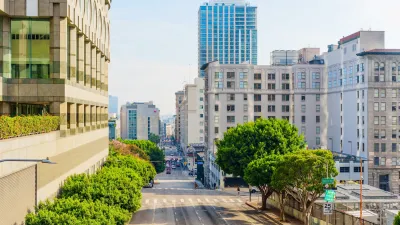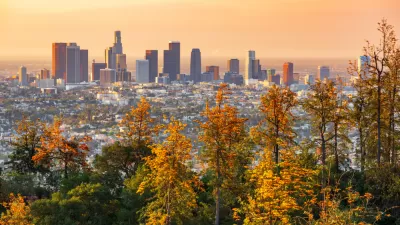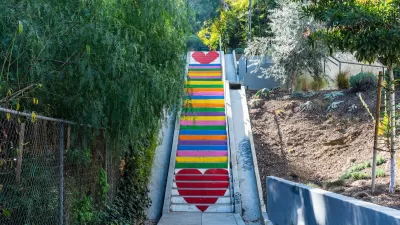A new USC study finds that relaxing Los Angeles’ outdated tree planting guidelines could significantly expand urban tree canopy and reduce shade disparities in lower-income neighborhoods, though infrastructure investments are also needed.

A new study by USC Dornsife’s Spatial Sciences Institute and Public Exchange reveals that Los Angeles’ strict and outdated tree planting rules are contributing to urban heat disparities, especially in under-resourced areas like Boyle Heights. These rules, originally created to protect infrastructure and public safety, are now limiting tree growth and widening the city’s “shade gap.” The researchers found that most of these restrictions are not codified in law but exist as internal city guidelines, which could be revised more easily to allow for more trees without compromising safety.
To explore the impact of looser planting regulations, the research team compared tree-planting capacity in Boyle Heights and Studio City. Though both areas share similar physical characteristics, Studio City has significantly more trees. Using mapping software and modeling more flexible guidelines seen in other California cities, the study found that Boyle Heights’ potential tree coverage could increase by 26 percent. However, narrow sidewalks and existing infrastructure still limit the types of trees that can be planted, with fewer large-canopy trees feasible in denser, lower-income neighborhoods.
The study also highlights how even small changes to planting guidelines — such as relaxing spacing around intersections, utility poles, and driveways — can significantly expand tree canopy in constrained areas. Since many of L.A.’s current rules are already widely violated without evident safety issues, researchers argue that updating internal guidelines is both practical and impactful. Still, to fully close the shade gap, broader infrastructure investments — like narrowing roads to create planting space — will be necessary. This research underscores the importance of rethinking urban forestry practices as a strategy for climate resilience and environmental justice.
FULL STORY: How changing L.A.’s tree rules could cool more neighborhoods

Maui's Vacation Rental Debate Turns Ugly
Verbal attacks, misinformation campaigns and fistfights plague a high-stakes debate to convert thousands of vacation rentals into long-term housing.

Planetizen Federal Action Tracker
A weekly monitor of how Trump’s orders and actions are impacting planners and planning in America.

In Urban Planning, AI Prompting Could be the New Design Thinking
Creativity has long been key to great urban design. What if we see AI as our new creative partner?

King County Supportive Housing Program Offers Hope for Unhoused Residents
The county is taking a ‘Housing First’ approach that prioritizes getting people into housing, then offering wraparound supportive services.

Researchers Use AI to Get Clearer Picture of US Housing
Analysts are using artificial intelligence to supercharge their research by allowing them to comb through data faster. Though these AI tools can be error prone, they save time and housing researchers are optimistic about the future.

Making Shared Micromobility More Inclusive
Cities and shared mobility system operators can do more to include people with disabilities in planning and operations, per a new report.
Urban Design for Planners 1: Software Tools
This six-course series explores essential urban design concepts using open source software and equips planners with the tools they need to participate fully in the urban design process.
Planning for Universal Design
Learn the tools for implementing Universal Design in planning regulations.
planning NEXT
Appalachian Highlands Housing Partners
Mpact (founded as Rail~Volution)
City of Camden Redevelopment Agency
City of Astoria
City of Portland
City of Laramie





























